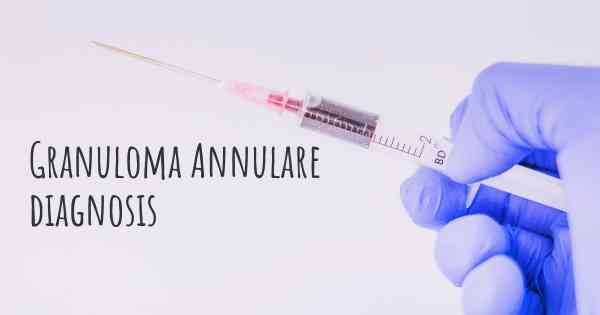How is Granuloma Annulare diagnosed?
See how Granuloma Annulare is diagnosed. Which specialists are essential to meet, what tests are needed and other useful information for the diagnosis of Granuloma Annulare

Granuloma annulare (GA) is a relatively common, benign skin condition characterized by the formation of small, raised bumps in a ring or circular pattern on the skin. It typically affects the hands, feet, elbows, or knees, although it can occur on other parts of the body as well. The exact cause of GA is unknown, but it is believed to be an immune system response.
Diagnosing GA usually involves a combination of clinical examination, medical history review, and sometimes additional tests. A dermatologist, a doctor specializing in skin disorders, is typically the healthcare professional who diagnoses and treats GA.
Clinical examination: The dermatologist will visually inspect the affected area of the skin. They will look for characteristic signs of GA, such as the presence of annular or ring-shaped lesions. These lesions are usually smooth, firm, and may be skin-colored, pink, or slightly red. The dermatologist may also examine other areas of the body to check for additional lesions.
Medical history review: The dermatologist will ask the patient about their medical history, including any previous skin conditions, allergies, or other relevant information. They may inquire about the duration and progression of the lesions, any associated symptoms, and potential triggers or factors that may have contributed to the development of GA.
Additional tests: In some cases, the dermatologist may order additional tests to confirm the diagnosis or rule out other conditions. These tests may include:
- Biopsy: A small sample of the affected skin may be taken for microscopic examination. This can help differentiate GA from other skin conditions with similar appearances.
- Blood tests: Although not specific to GA, blood tests may be conducted to rule out other underlying medical conditions that can cause similar skin manifestations.
- Imaging studies: In rare instances, imaging studies such as X-rays or ultrasound may be ordered if there is suspicion of deeper involvement or to rule out other conditions.
It is important to note that GA is usually a benign and self-limiting condition, meaning it tends to resolve on its own without treatment. However, if the lesions are bothersome, persist for a long time, or cause cosmetic concerns, treatment options can be discussed with the dermatologist.
Treatment: Treatment for GA may include topical corticosteroids, which can help reduce inflammation and improve the appearance of the lesions. Other options may include cryotherapy (freezing the lesions), laser therapy, or intralesional corticosteroid injections for more severe or resistant cases. However, it is important to remember that treatment is not always necessary, and the decision to treat or not will depend on individual factors and patient preferences.
In conclusion, diagnosing granuloma annulare involves a clinical examination, medical history review, and sometimes additional tests. A dermatologist is the healthcare professional who typically diagnoses GA. While treatment options are available, the condition often resolves on its own without intervention.








